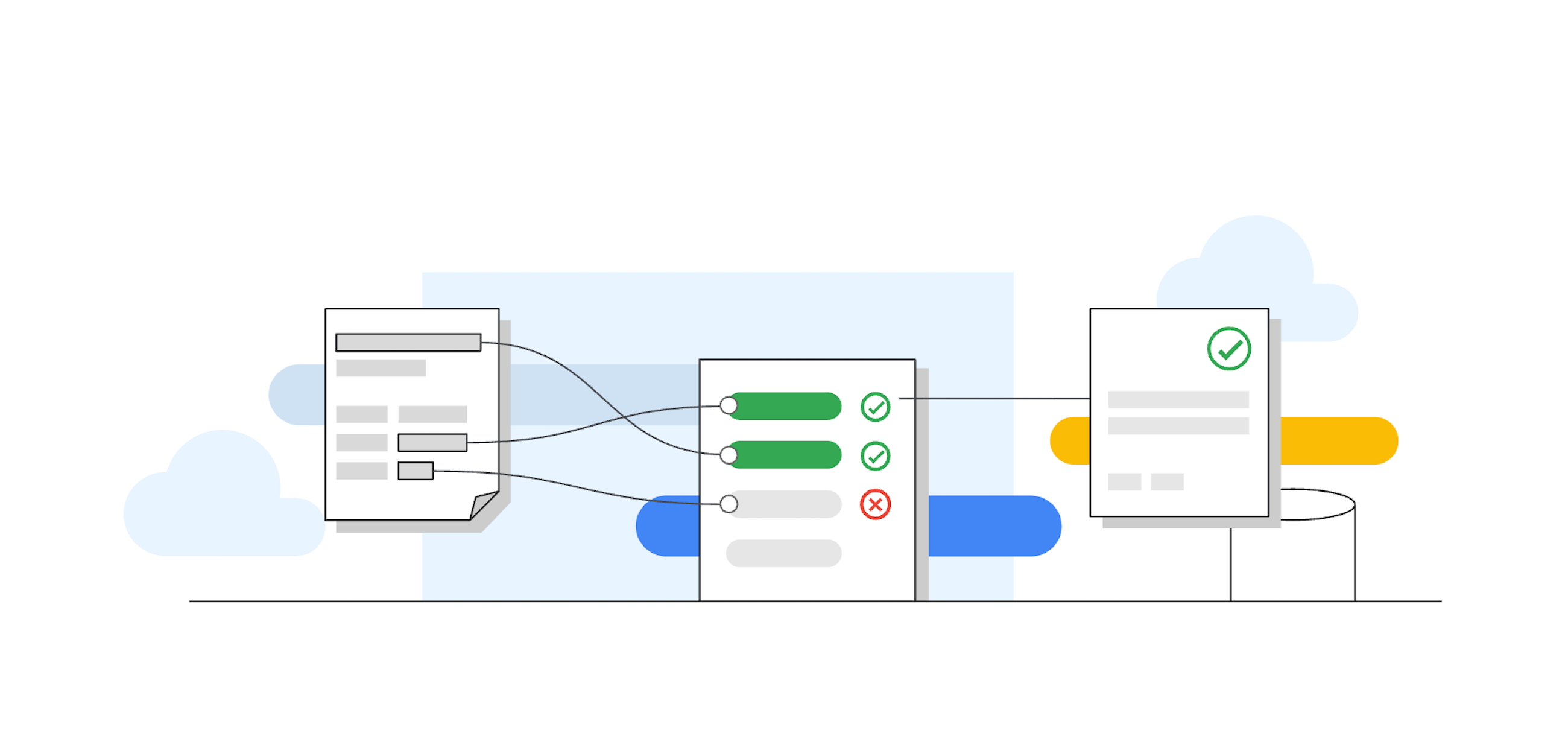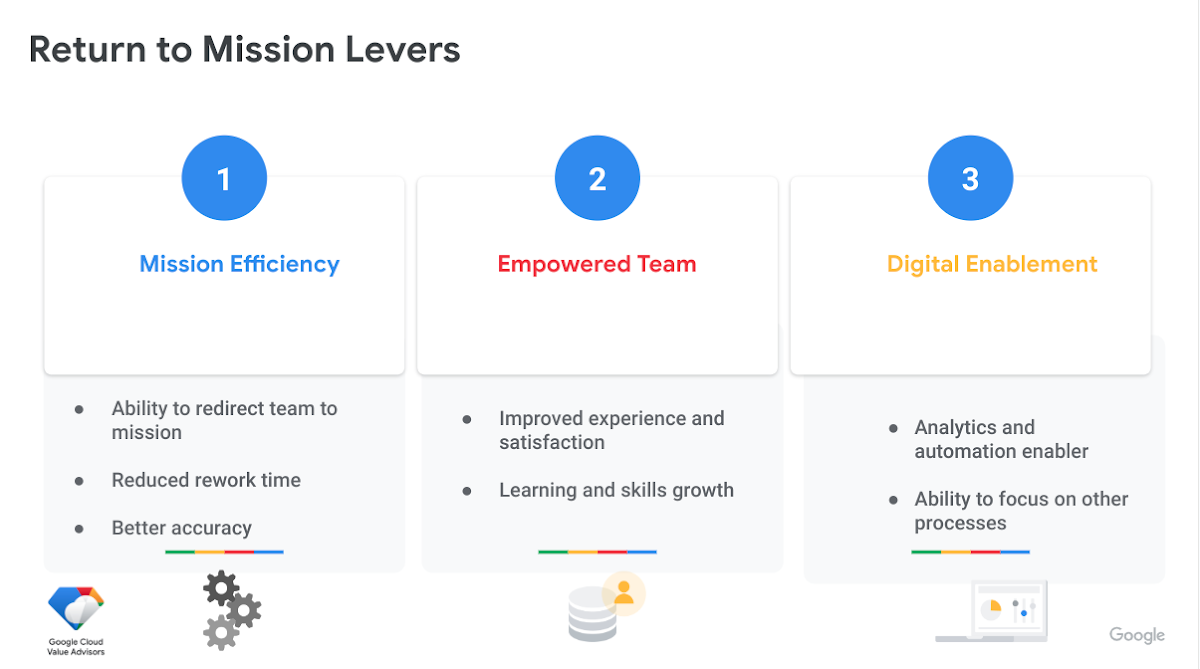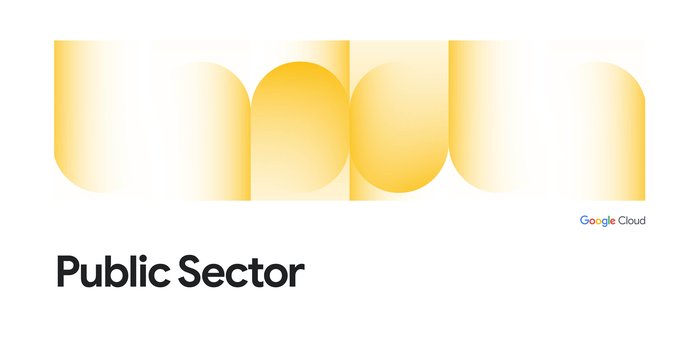Streamlining with DocAI can yield cost savings and help accelerate missions

Adam Sommers
Senior Principal, Cloud Value Advisors, Google Cloud
Rajat Gupta
Customer Engineer, Google Cloud
If there is one thing that the government has a lot of, it’s paper. Every year, the federal government processes more than 106 billion paper forms from 10,000 unique templates. In 2021, Americans spent 10.5 billion hours on government paperwork at an estimated cost of $117 billion to the public and nearly $39 billion to the federal government. Government workers and constituents alike are spending exorbitant amounts of time completing and processing documents by hand, which can drive exhaustion and frustration.
Document AI for the government empowers organizations to leverage Google machine learning to classify, split, and extract information to speed processing and analysis. “DocAI” helps free up government workers to focus on higher value work.
While agencies have a wide range of missions, they are all focused on improving the constituent experience, better serving the public, and driving operational efficiencies. Likewise, constituents want a better experience and faster resolution. Government employees seek a streamlined workflow and the opportunity to work with new technologies which drives job satisfaction and retention.
DocAI can help government workers create more streamlined workflows to improve operations as well as the constituent experience.
Reduce processing time by up to 90% with DocAI
The top five federal agencies use an average of 900 unique forms. Consider one unique paper form with 125 fields which takes ten minutes of manual entry time per form, and the same unique form is processed 240,000 times a year. In addition, rework is 5% of the total number of the forms processed per year. With tools such as Document AI, the processing time can be reduced by 90% to one minute per form and the rework can be cut in half. By cutting processing time, agencies are able to accelerate their transformation, and significantly reduce cost and time, providing a notable return on investment.
If you consider a fully loaded FTE is $100,000, this all translates into $9-10 M net savings when aggregated over five years - all from 1 form. It’s not unrealistic to assume an agency could have roughly 100 unique forms, in that scenario aggregate net saving would approach $1B.
With less focus on document processing, implementing DocAI empowers federal employees to redirect their time back to mission related work. Agencies can experience shorter processing time, improved accuracy, and higher constituent satisfaction.


Further, embracing DocAI as a part of a broader digitization strategy has many measurable benefits, such as the ability to increase search functionality, information analysis, the elimination of storage costs, reduction in cost via improved insights (e.g. anomaly detection) and enhanced in-line auditing. In addition, a digital transition provides a mechanism for disaster recovery (DR) in a secure environment.
Applying Document AI in Government
Automating document processing can help government workers – here are a few common scenarios:
Verifying identity - documents can be automatically extract application information, which can help minimize fraud and document theft
Accelerating application processing - documents can be automatically extract application information, helping to improve time and accuracy of information
Managing records - agencies can more easily use DocAI to classify and store records, helping government workers find, access and catalog records quickly and more easily
The right partner for your mission
The key levers outlined in the example above drive universal and measurable value for organizations.To achieve the benefits of digitization, transformative technological solutions require numerous capabilities. Including scanning, optical character recognition (OCR), data enrichment, labeling, and the ability to handle a wide variety of document types. Google Document AI uses and knowledge-based artificial intelligence (AI) and ML to achieve high levels of accuracy, strong architecture, and rapid deployment.
The Forrester Wave Report “Document-Oriented Text Analytics Platforms” recently rated Google a leader among “the 12 Providers That Matter Most” via a comprehensive rating system.
Visit Google Cloud for Federal Government for more information on how we can help. Google Cloud experts can build a case for government agencies and provide a return on investment estimate.
Sources

